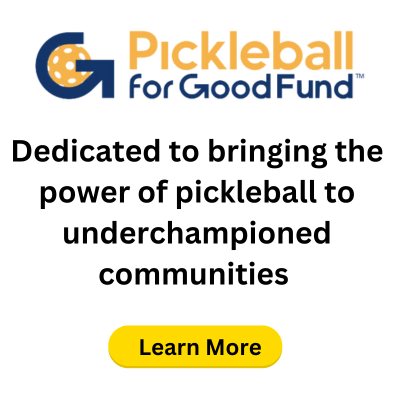Pickleball may be known for its funny name and fast rise in popularity, but it’s more than just a recreational fad — it’s quietly becoming one of the best ways to support your brain health, maintain coordination, and stay socially connected as you age.
At the heart of it all? Hand-eye coordination — a skill that’s often taken for granted until it begins to decline.
What Is Hand-Eye Coordination, and Why Does It Matter?
Hand-eye coordination is your brain’s ability to interpret visual information (like a ball flying toward you) and send a message to your body (like swinging a paddle to hit it back). This system relies on your visual system, motor skills, reflexes, and cognitive processing working together in real time.
As we age, these abilities can naturally decline — but they don’t have to. In fact, staying physically and mentally engaged can help preserve or even improve these skills over time.
“Poor eye-hand coordination can lead to impairment in activities of daily living, including eating, drinking, driving, and even buttoning a shirt,” says Dr. Andrew Lee, neuro-ophthalmologist and clinical spokesperson for the American Academy of Ophthalmology.
According to the Centers for Disease Control and Prevention (CDC), physical activity — especially activities that involve coordination — may reduce the risk of cognitive decline and improve problem-solving skills, attention, and mood.
Why Pickleball Is the Perfect Brain-Body Workout
Among all the activities that boost hand-eye coordination, pickleball stands out. It combines the strategic movement of tennis, the reflexes of ping-pong, and the accessibility of badminton — all while being easy on the joints.
Here’s why the sport is so effective for your brain and coordination:
Constant Visual-Motor Feedback
Every rally in pickleball requires you to:
- Track a ball in motion
- Judge speed and distance
- Anticipate your opponent’s next move
- Position your body accordingly
- Time your swing precisely
This ongoing loop of see → decide → act trains your brain in a way that few other sports do. It’s essentially real-time brain training, disguised as a fun game.
Cognitive Benefits
A 2018 study in Preventive Medicine found that older adults who are physically inactive were twice as likely to experience cognitive decline compared to those who regularly exercise. But when the activity includes hand-eye coordination, the brain gets an added layer of stimulation.
This form of multitasking boosts:
- Reaction time
- Decision-making
- Spatial awareness
- Attention and focus
In other words, pickleball doesn’t just get your heart pumping — it gives your brain a workout, too.
Mental Health and Mood
A study published in Leisure Studies found that older adults who play pickleball regularly report lower levels of depression and higher levels of life satisfaction. Social interaction, laughter, goal-setting, and a sense of community all play a role here.
“Pickleball offers a rare combination of mental stimulation, physical activity, and social bonding — all factors that support aging well,” says Dr. Lee.
Physical Accessibility and Low Barrier to Entry
Pickleball isn’t just effective — it’s achievable for a wide range of people, including those new to sports or returning after a long break.
- Smaller courts mean less running than tennis
- Larger paddles and slower balls make tracking easier
- Games are short — usually played to 11 points
- Can be played indoors or outdoors, in singles or doubles
This makes pickleball particularly appealing for adults aged 50 and older — the very group most at risk for cognitive decline and physical deconditioning.
And with courts popping up everywhere, it’s becoming easier to get started. You can find a game near you by visiting the USA Pickleball Association website and searching by ZIP code.
What the Research Says
Here’s a quick look at the science behind the benefits:
- Cognitive Function: The CDC links physical activity with reduced dementia risk and better executive functioning.
- Mood & Social Connection: Leisure Studies found regular pickleball players experience fewer symptoms of depression.
- Hand-Eye Coordination: Studies on coordination-related sports (like tennis and ping-pong) show significant improvements in visual-motor skills with regular play.
While specific studies on pickleball and brain health are still emerging, experts say the evidence from similar sports and coordination-based activities is compelling enough to recommend it widely.
How to Get Started
If you’re new to the game, here are a few steps to dip your paddle in:
- Find a local community center or YMCA with beginner pickleball courts
- Start with group lessons or clinics to build skills and confidence
- Invest in basic gear (a paddle, a few balls, and court shoes)
- Stay consistent, even if it’s once or twice a week
You don’t need to become a pro — just showing up, hitting the ball, and having fun is more than enough to start seeing benefits.
Final Takeaway
Pickleball isn’t just a sport — it’s a brain-enhancing, coordination-boosting, mood-lifting lifestyle shift that’s accessible to nearly everyone. By blending physical activity with cognitive challenges and social interaction, it offers one of the most well-rounded approaches to healthy aging available today.
So whether you’re looking to boost your reflexes, stay sharp behind the wheel, or simply have a good time with friends, the court is calling. And your brain will thank you.





